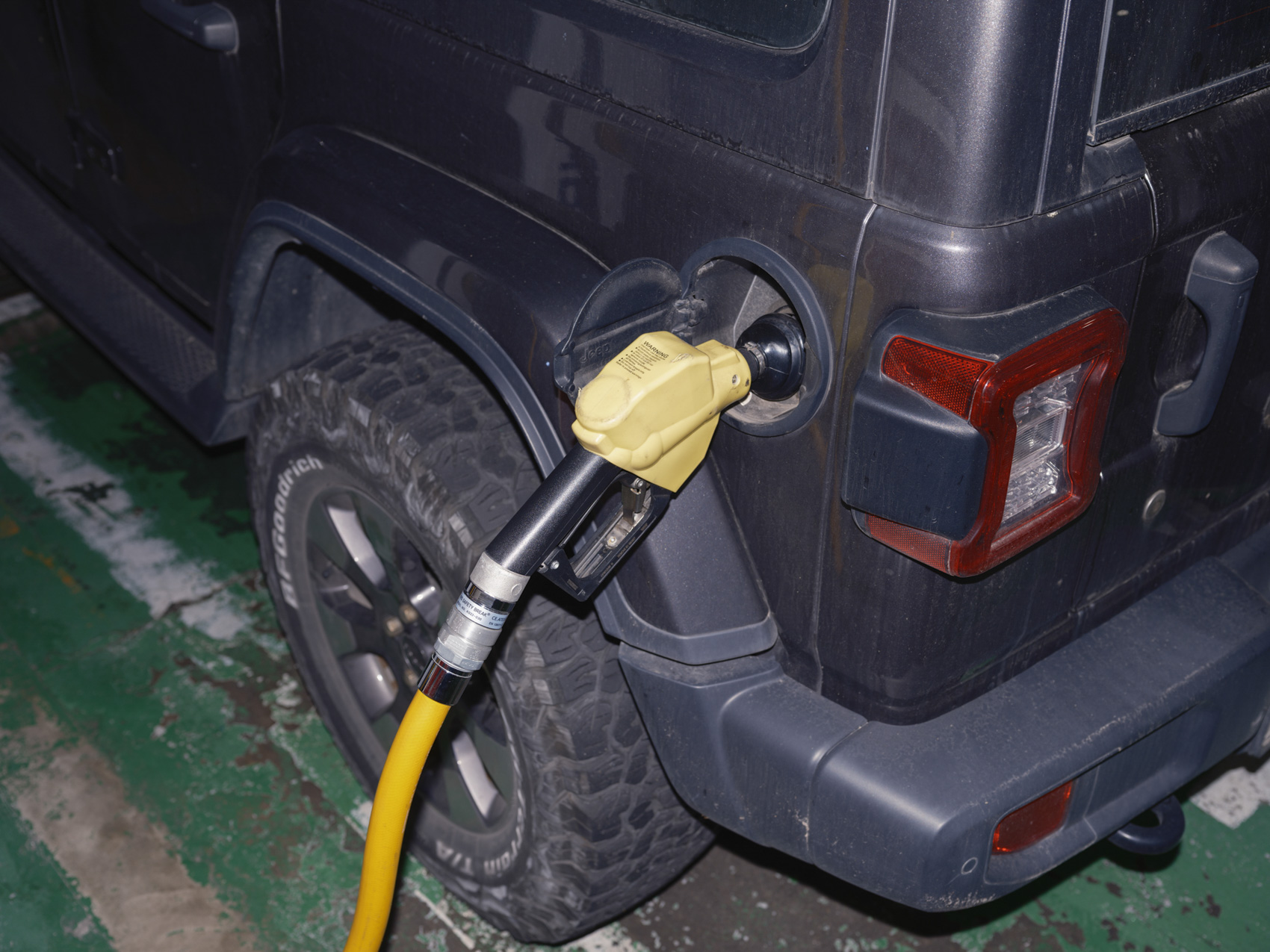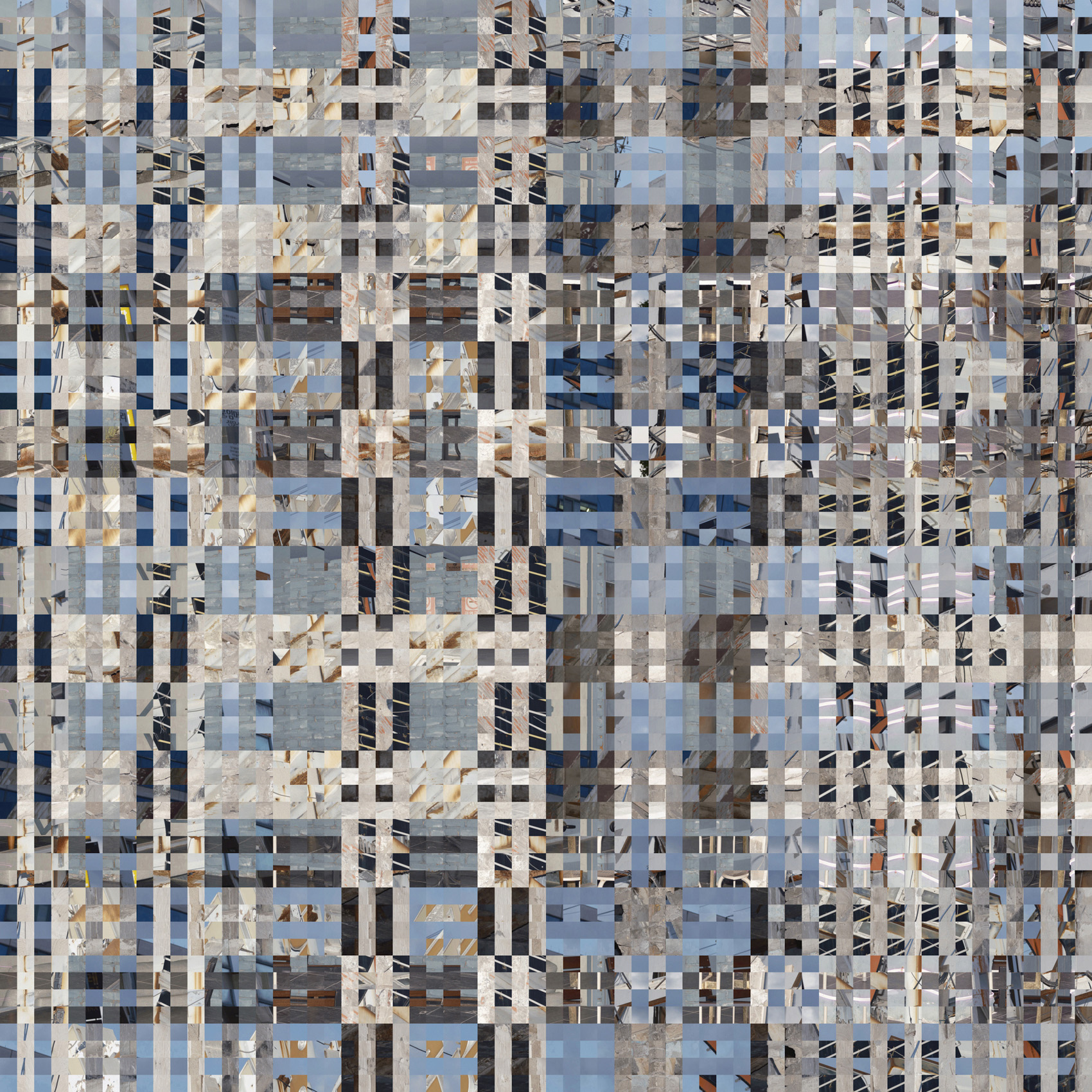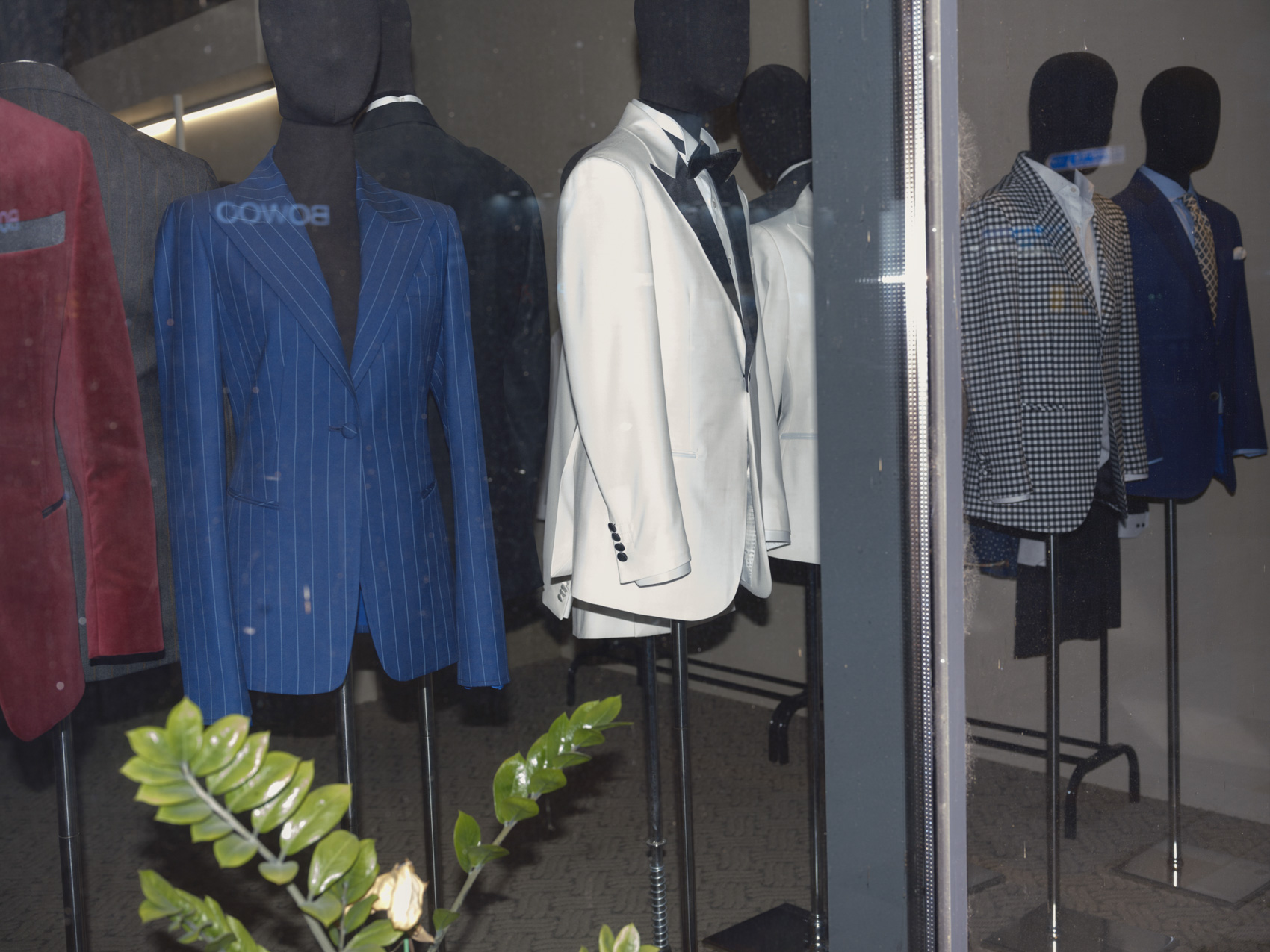System of Memory
2023
The 'System of Memory' is an experimental project aiming to visualize the imperceptible processes of the human memory system.
While individuals retain memories of specific places or events, these memories undergo changes and distortions. This is due to the reinterpretation of past memories through shifts in perspective and the accumulation of experiences.
I sought to experiment with how memories change and distort using personal photographs. These personally captured images serve as not only my private memories but also expressions of sensations.
Based on images representing specific places or events, I visually implemented the system of memory disintegration and recombination. The process of disintegration and recombination draws inspiration from the pixel units of digital image information and the weaving technique of fabric.
While individuals retain memories of specific places or events, these memories undergo changes and distortions. This is due to the reinterpretation of past memories through shifts in perspective and the accumulation of experiences.
I sought to experiment with how memories change and distort using personal photographs. These personally captured images serve as not only my private memories but also expressions of sensations.
Based on images representing specific places or events, I visually implemented the system of memory disintegration and recombination. The process of disintegration and recombination draws inspiration from the pixel units of digital image information and the weaving technique of fabric.

An old memory of ‘Disk Defragmentation’ in Windows system was the beginning of this experiment.
Experiment with Analog Handcutting
The two images of decalcomanie techniques may initially seem identical, but upon closer inspection, they reveal subtle differences. I draw a parallel between the memory system and these decalcomanie images, suggesting a subtle distortion influenced by the nuances of recall and the passage of time.
The identical image is flipped and affixed in various directions. After the cutting process, the fragments are skilfully recombined. As a result, I could generate a similar yet subtly distorted image, mirroring the intricate twists in the recollection process and the gradual march of time.
The identical image is flipped and affixed in various directions. After the cutting process, the fragments are skilfully recombined. As a result, I could generate a similar yet subtly distorted image, mirroring the intricate twists in the recollection process and the gradual march of time.

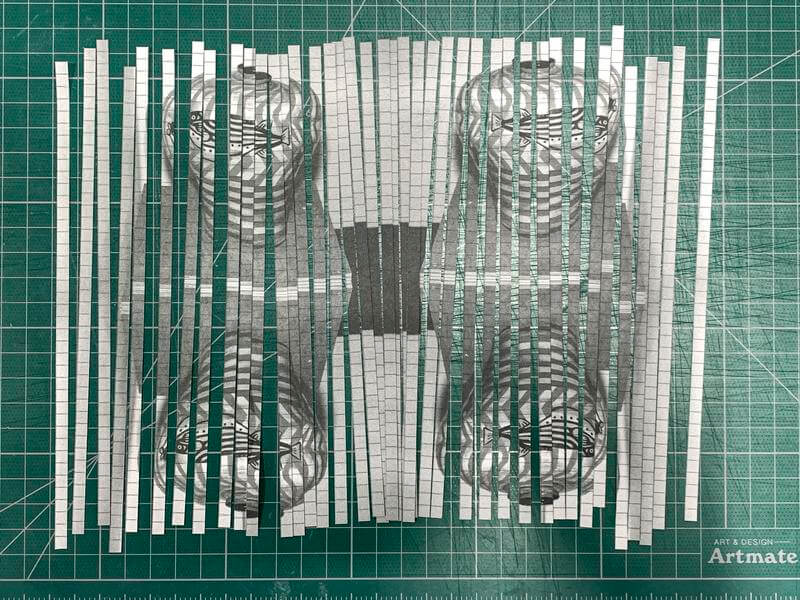

Experiment with Digital Coding
For digital experiments, I systematically recombined images using Processing.
I captured pictures of a specific object from four different perspectives, employing them for digital experiments.
One side of each image was divided into 4/8/16/32/64 pieces, followed by a random mixing process. This idea stemmed from considering the relationship between image pixels and their corresponding bit depth.
I captured pictures of a specific object from four different perspectives, employing them for digital experiments.
One side of each image was divided into 4/8/16/32/64 pieces, followed by a random mixing process. This idea stemmed from considering the relationship between image pixels and their corresponding bit depth.






However, the results generated automatically by coding were only digital noise.
Direction
A new direction was created based on previous experiences.
- Work on a digital basis.
- Employ a passive mechanism.
- Utilize four perspectives for the same object/space.
- Extend the scope of slicing one side in the order of 4/8/16/32/64 slices.
1. Slice it vertically.
2. The cut pieces are sequentially arranged at regular intervals from left to right.
3. When the right end is reached, the empty space is filled from right to left and placed sequentially.
4. Slice the mixed image horizontally.
5. The cut pieces are arranged sequentially at regular intervals from top to bottom.
6. When the bottom is reached, the empty space is filled from the bottom to the top and placed sequentially.
The above direction drew inspiration from the textile production technique of weaving, where warp and weft intersect to create fabric. This direction was applied to photographs capturing various scenes in different locations, resulting in the following outcomes.
Process







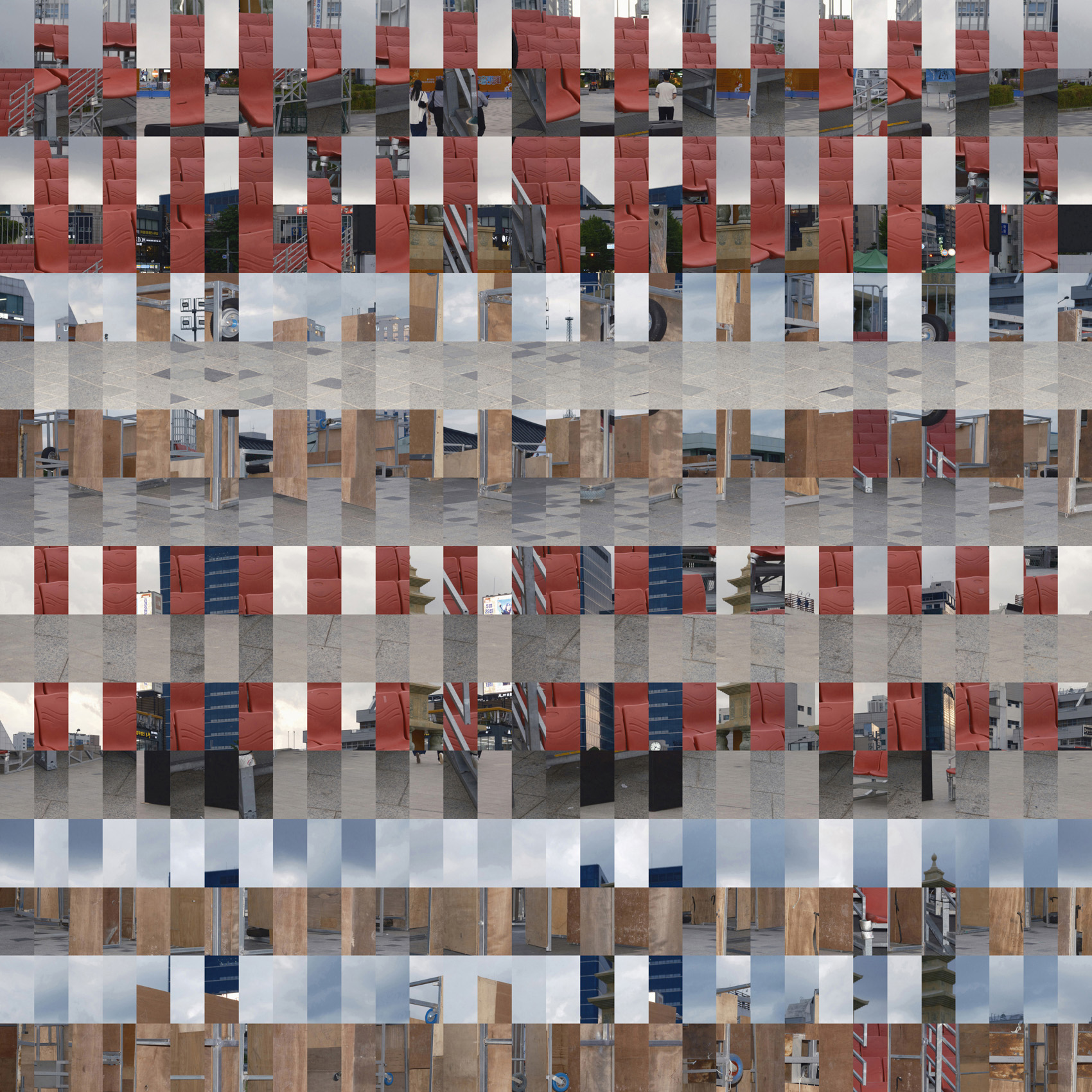
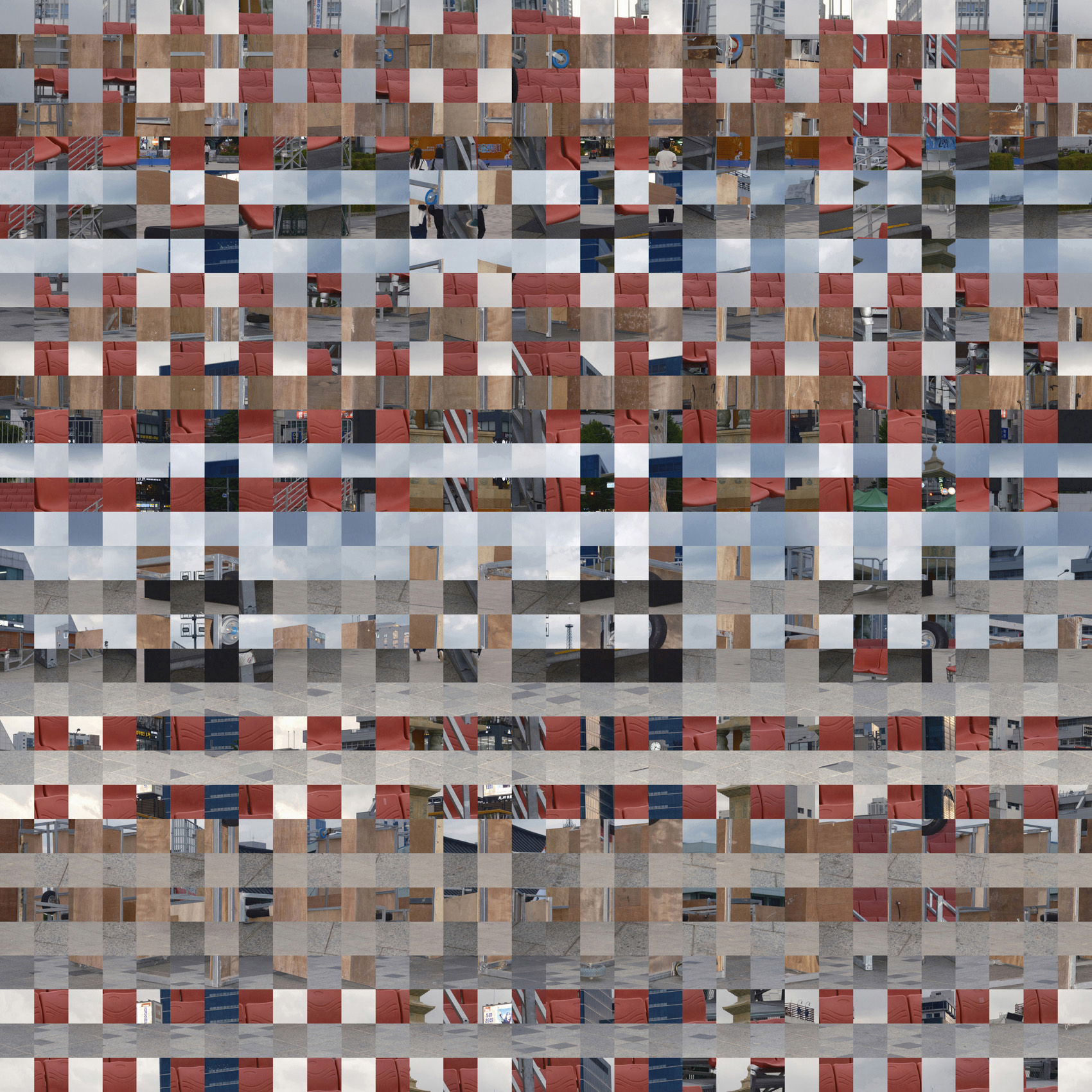
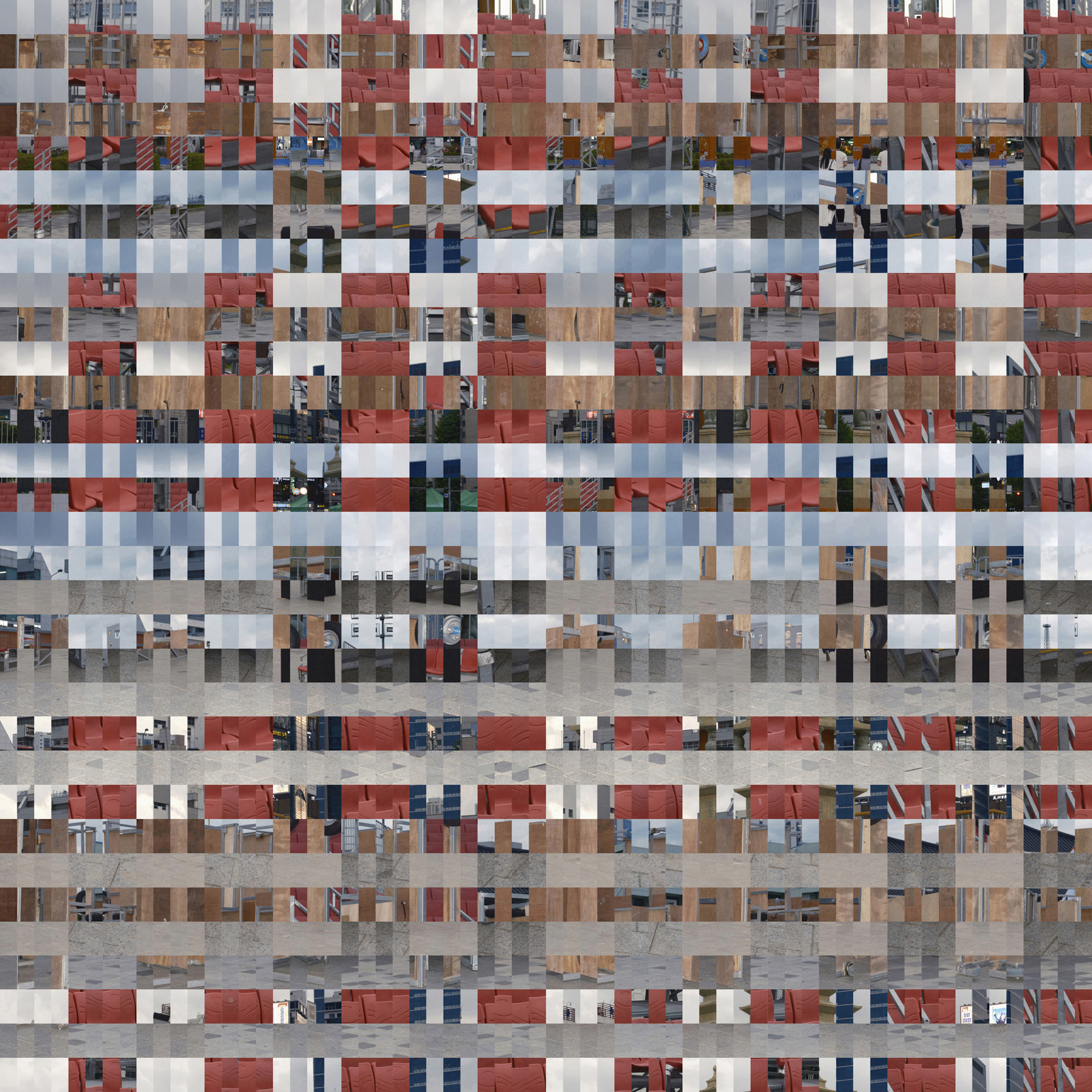


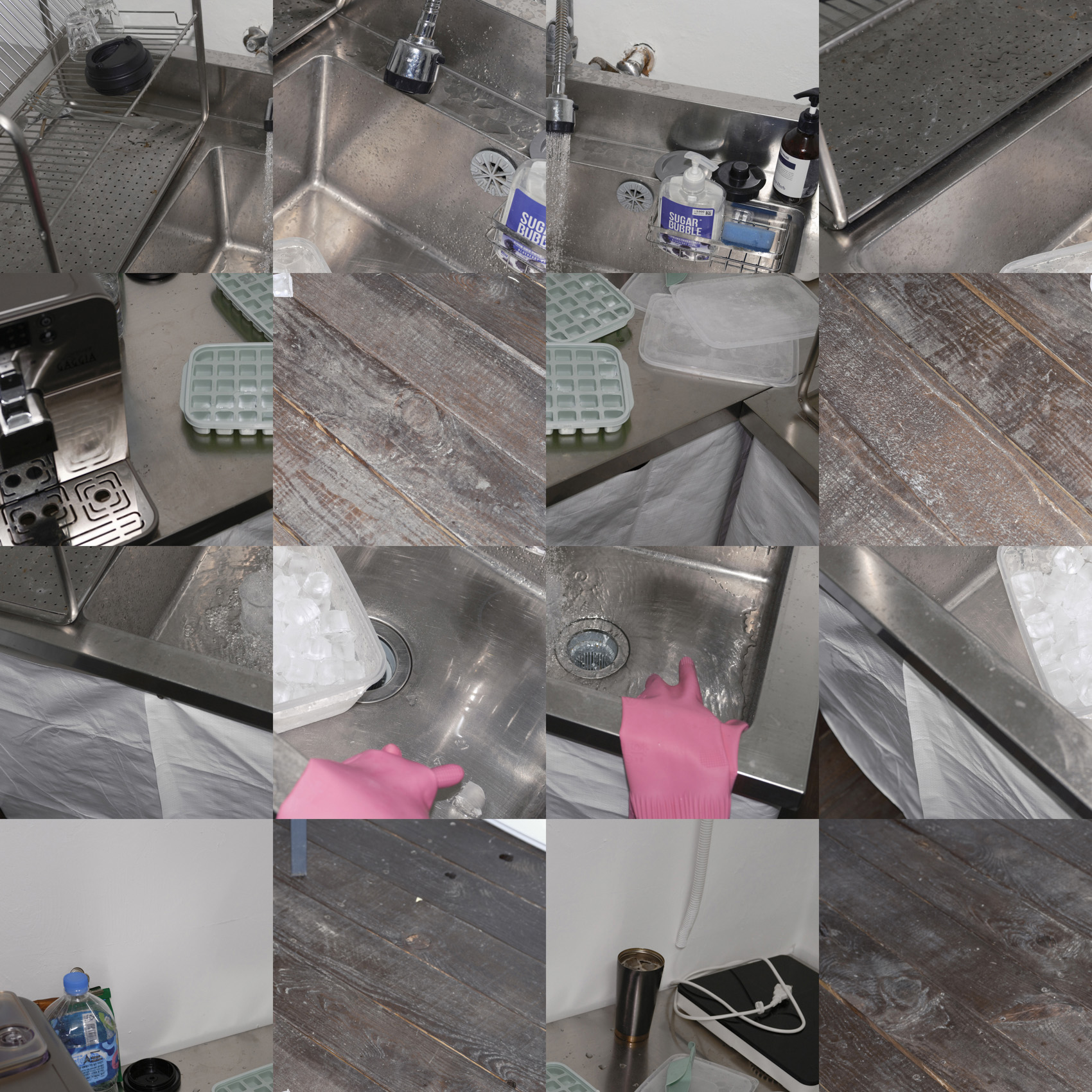















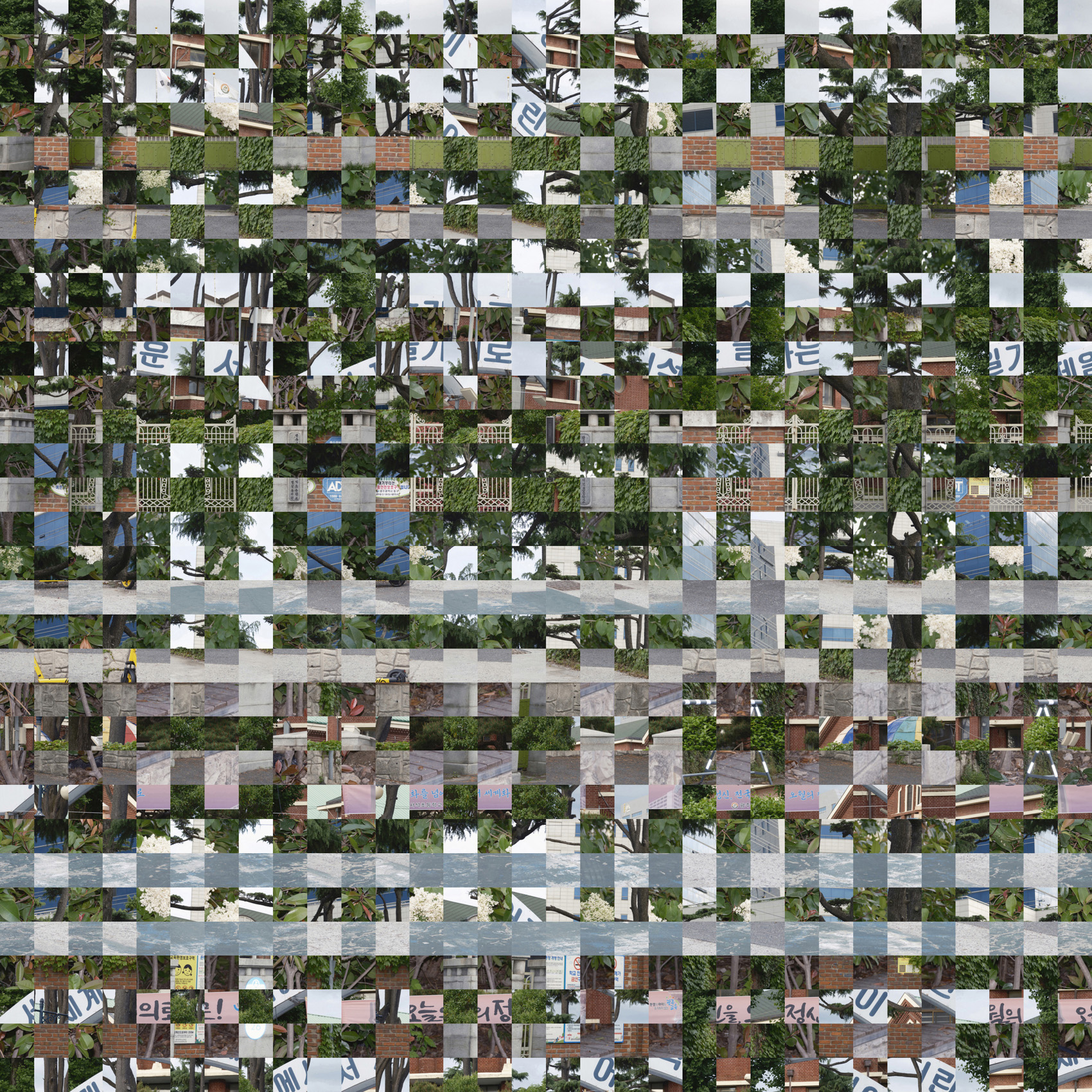







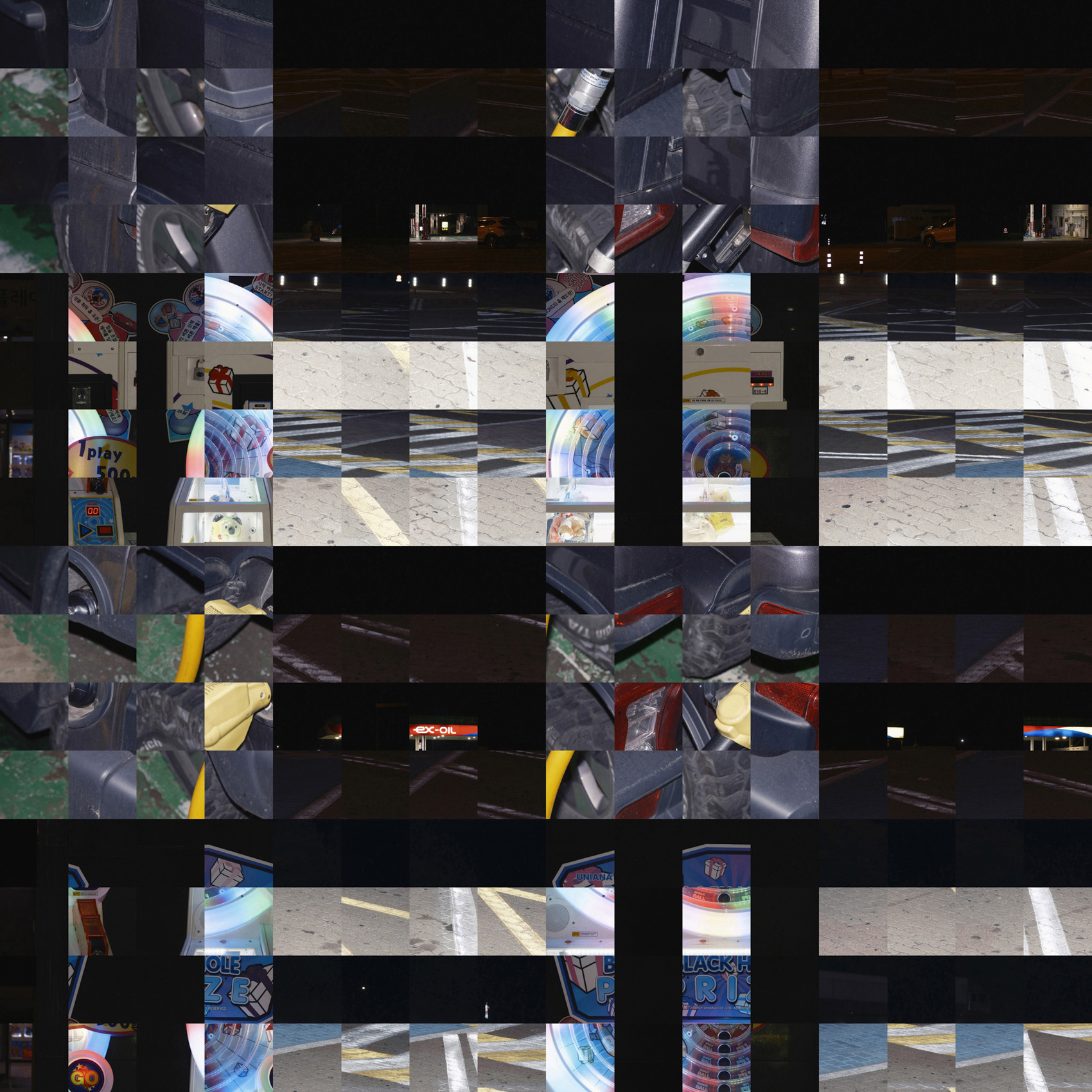





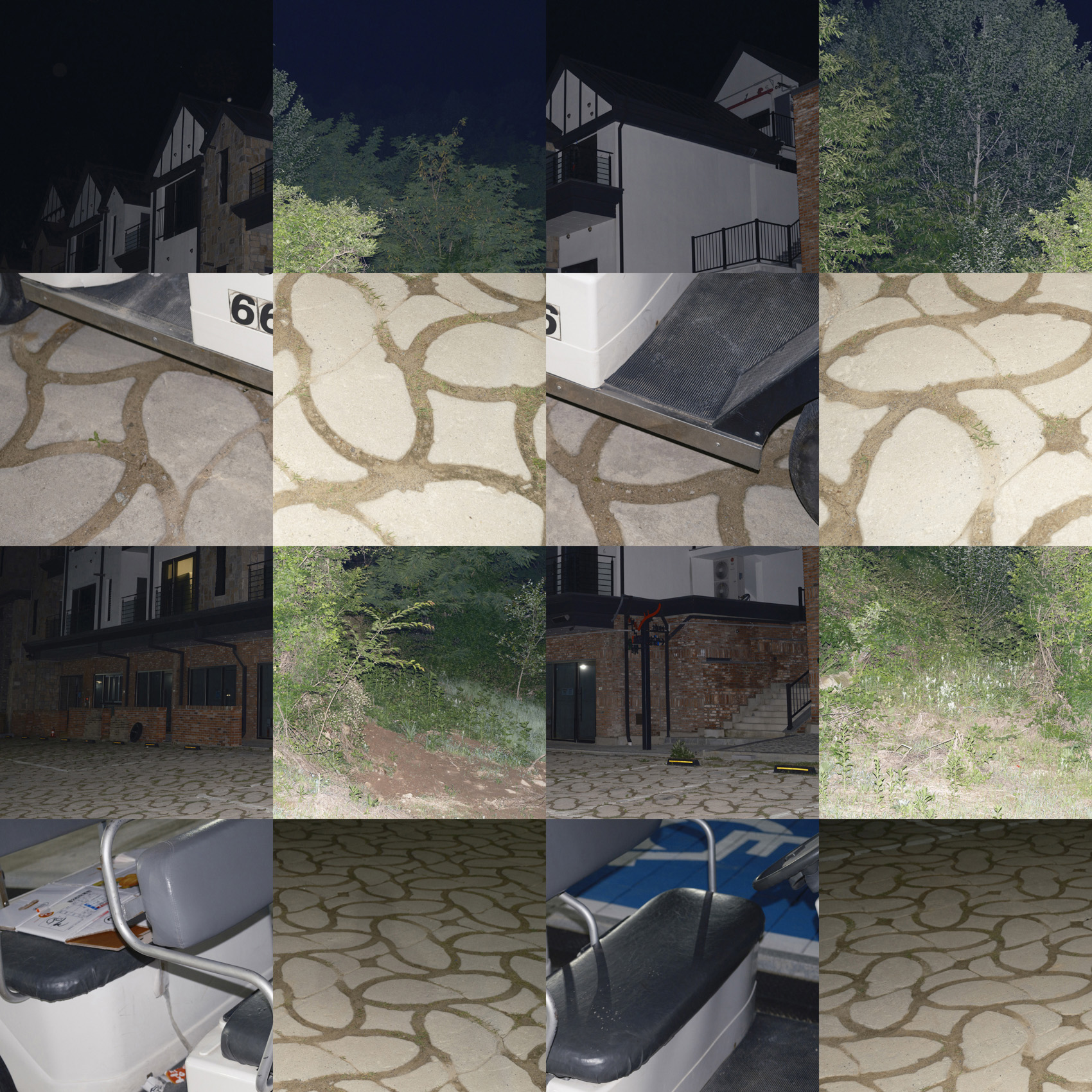


















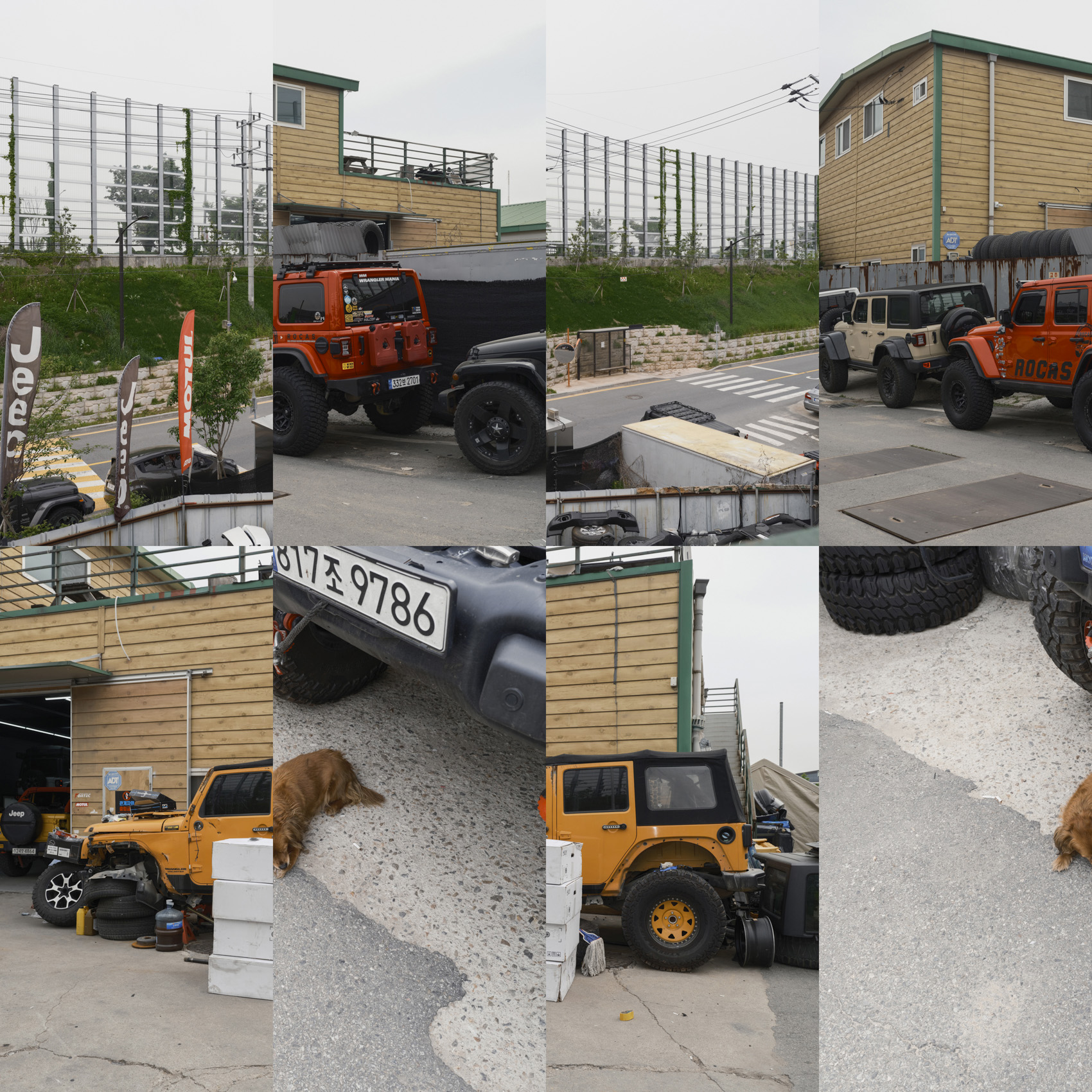



















By digitally cutting and rearranging photos following a procedure I personally devised, I could visualize mutation in memory due to the passage of time or changes in perspective in the form of pixel patterns.
Outputs















